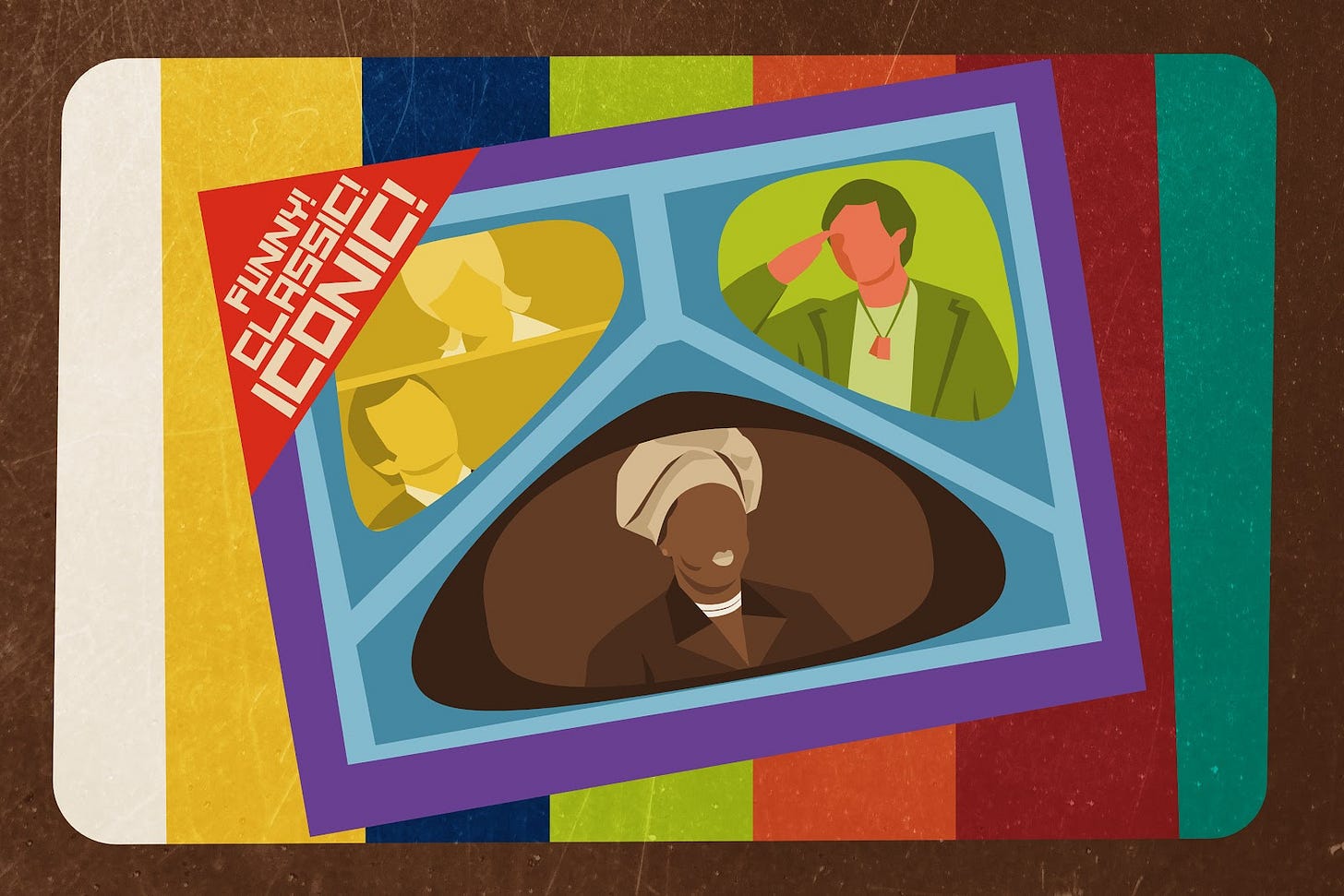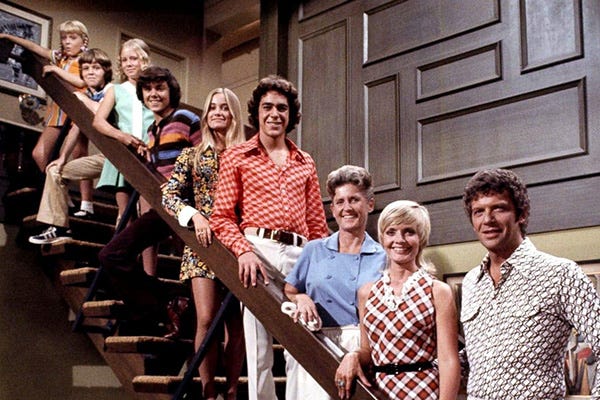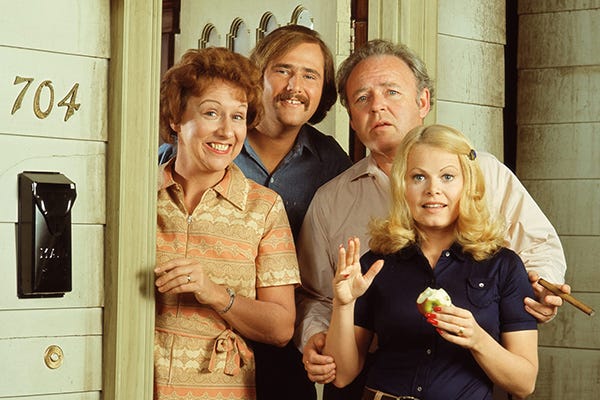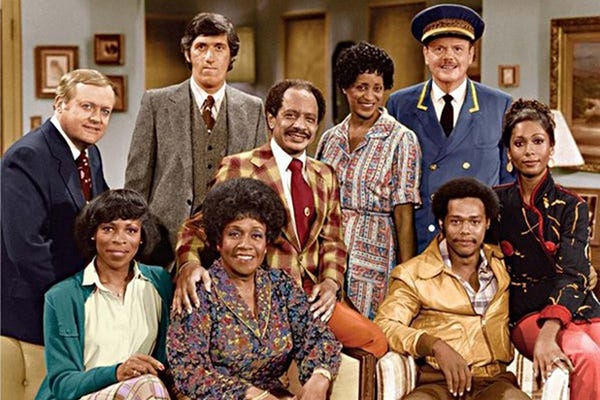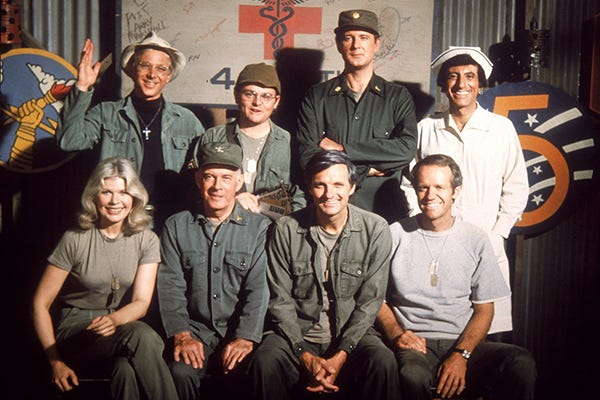How Classic Sitcoms from the '50s to '70s Shaped Popular Culture
A brief look at the evolution of the sitcom from the earliest laugh track!
Chances are you’ve had this experience as a kid: you go to school all day, come home, have dinner and turn on the TV. Your family gathers around the living room and you watch a few primetime sitcoms together. Whether it’s with a laugh track or not, half hour comedies have a knack for bringing folks together since they purposefully appeal to a wide audience. Sitcoms have been around for decades, and they’ve changed so much over the years relative to changes in American culture. Sitcoms have always used humor to reflect the ethos of the time, and that’s one of the reasons they have such staying power and are so significant in pop culture.
While it’s impossible to cover the entire history of the format, we are taking a glance at the most memorable sitcoms of every decade. (For a more in-depth discussion, the CNN docu-series, History of the Sitcom, offers a fantastic look at how sitcoms have evolved over time.) Here you’ll find a little background on sitcoms from the 1950s through the 1970s, while a future piece will focus on sitcoms from 1980 through today.
1950s: The birth of the modern sitcom
Before it was normal to own a television in the home, the situation comedy (sitcom) appeared on radio in the 1920s through non-serialized storytelling: the characters were the same while each episode featured different stories and scenarios. Amos ‘N’ Andy was one of the most popular radio sitcoms, which later moved to television with many others.
In 1948, Mary Kay and Johnny, a comedy starring real life couple and comedians Mary Kay and Johnny Stearns, became the first sitcom to debut on television in America. But this wasn’t the show that everyone still talks about today. The show that we still celebrate as the one that paved the way was I Love Lucy, starring Lucille Ball and Desi Arnaz as Lucy and Ricky Ricardo. It premiered in 1951 and through its success set the stage for the modern sitcom. Lucy and Desi were a modern couple both on screen and off, and their show became the blueprint for future sitcoms about married couples.
Later in the 1950s, classics like The Honeymooners, Leave it to Beaver, and Father Knows Best followed the success of I Love Lucy and told stories about modern families of the time. Traditional family values and typical family scenarios were popular. But that would evolve in the coming years as the nation grew and changed.
1960s: The times they are a-changin’!
Bob Dylan wrote “The Times They Are A-Changin’” in 1964, and he was right on all fronts. In the 1960s, things started to evolve a bit in terms of the content of sitcoms because the world was changing. While TV in the past reflected traditional family dynamics, the shows of the 1960s introduced different kinds of families.
Since divorce was more prevalent in society, it became a bit more mainstream in the cultural zeitgeist too. And more shows focused on teens and unmarried singles. The Brady Bunch, which premiered in 1969, famously featured a blended family. The Odd Couple was about two divorced men who move in together and are complete opposites (a concept that became a common trope used in future sitcoms like Two and a Half Men and Two Broke Girls). Marlo Thomas starred in That Girl, a sitcom about a single woman focused on her career as an actress. Sally Field’s Gidget was a teenage girl being raised and guided by her widowed father, and the show focused on their relationship as well as her teenage adventures.
Shows like The Addams Family and The Munsters gave the paranormal a comedic and family-oriented spin. My Favorite Martian, Bewitched, and I Dream of Jeannie introduced the sci-fi and fantasy genres into the sitcom landscape. Gilligan’s Island took the sitcom setting out of the home for a bit of adventure. In a completely different kind of sitcom, The Monkees blended music and comedy to offer very stylized storytelling about a rock and roll band traveling the world–and introduced a generation of adoring teenage fans to a young Davy Jones. Fans today are still listening to The Monkees’ discography and going to live shows.
1970s: Issue-driven comedy and postwar escapism
The 1970s brought in an influx of shows that represented a wider range of Americans and pushed societal boundaries of what you could and couldn’t talk about on television. The most famous and still impactful example of this was the sitcom, All in the Family. All in the Family’s main character Archie Bunker was opinionated and often small-minded while his wife Edith was sweet and came off as naive. Through Archie’s character, writers boldly confronted socio-cultural issues of the time: race, gender, LGBTQ rights, feminism, and other political topics were explored via conversations that also managed to make the audience laugh. While sitcoms of the past were meant to be escapist, this sitcom dealt directly with issues of the day. Similarly, Taxi, a show about the night shift taxi drivers of a company in New York City, was as funny as it was serious about modern day issues like addiction and grief.
The racial landscape of primetime TV also started to reflect the real world people lived in and began to show viewers characters that looked more like them. Shows like The Jeffersons, What’s Happening!!, Sanford and Son and Good Times featured all Black casts, and the overwhelming success of these shows paved the way for future Black actors and stories.
M*A*S*H, a sitcom starring Alan Alda about doctors in the Korean War, reflected another issue of the time. During its early years on the air, the United States was still involved in the controversial Vietnam War, making it a challenge for the show to stay entertaining while grappling with the realities of war. Like All in the Family, the show dealt with heavy conversations through comedy, and allowed characters to present many sides to an issue that Americans were struggling with in their own daily conversations.
By the late 1970s, a decade that had been tumultuous on so many fronts, audiences craved escapism and nostalgia. Shows like Laverne & Shirley, Maude, and Three’s Company featured singles who were mostly having a great time working and dating, as well as living together with kooky roommates and neighbors.
The traditional family comedy Happy Days epitomized 1950s nostalgia, and the character of Richie Cunningham, played by Ron Howard, became a trope in and of itself for the all-American teenage boy. The escapist sci-fi spinoff Mork & Mindy launched the career of comedian Robin Williams who played the extraterrestrial Mork. Since the movie Star Wars was such a phenomenon at the time, Mork was written into Happy Days to capitalize on fans’ new interest in space, and it worked for audiences–especially with a gifted comedian like Williams playing the role.
All of these shows are just some of the hundreds of sitcoms that graced the small screen from the 1950s through the 1970s as the format became dominant in popular culture. In Part 2 we explore a small history of the sitcom from the 1980s through today!
Want to do more with your fandom? Our Discord is where you’ll find everything you need to know about our fandom-forward ecosystem at Remarkist! Don’t forget to follow us on Instagram, tumblr, and Spotify for more storyworld content—and hit that subscribe button so you never miss a thing at rmrk*st Mag!




